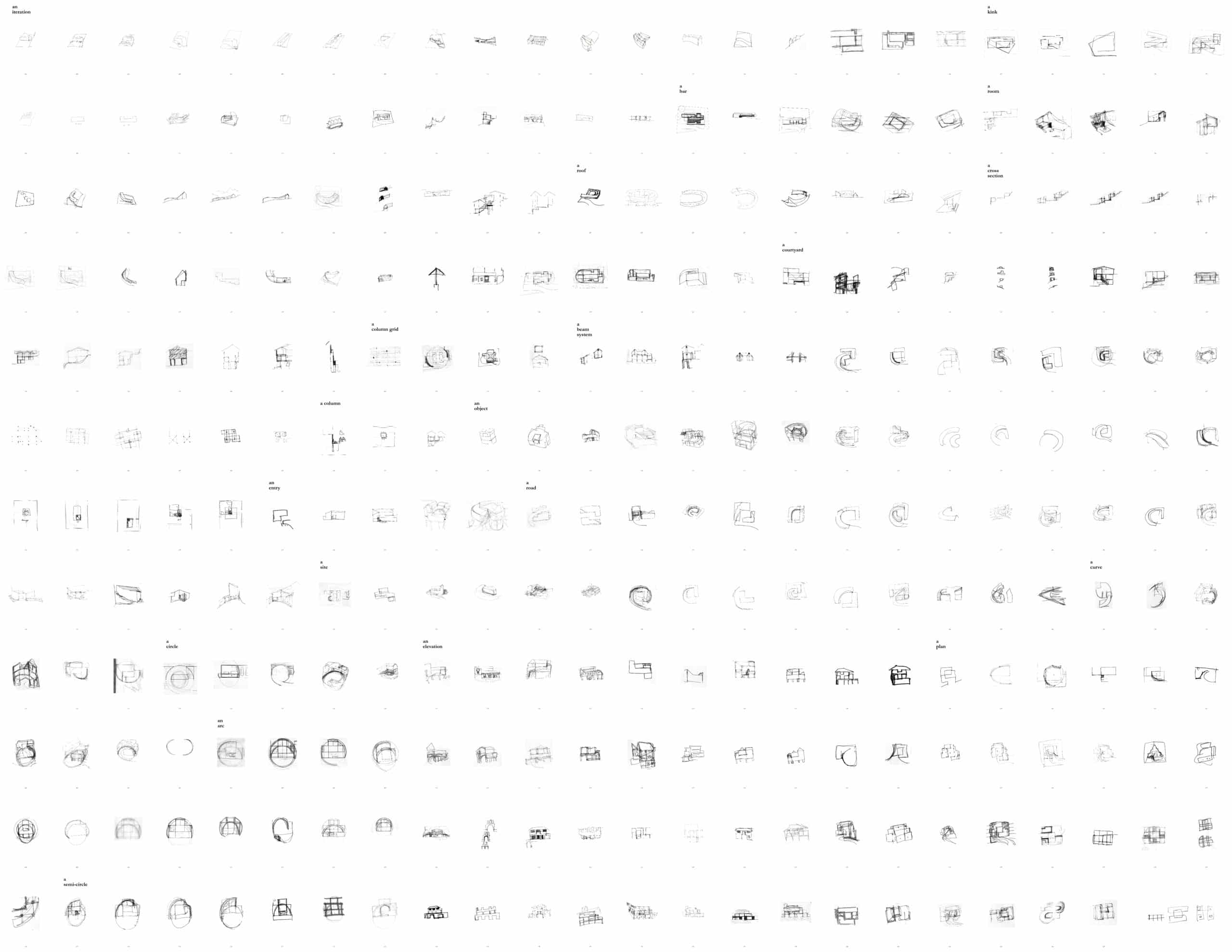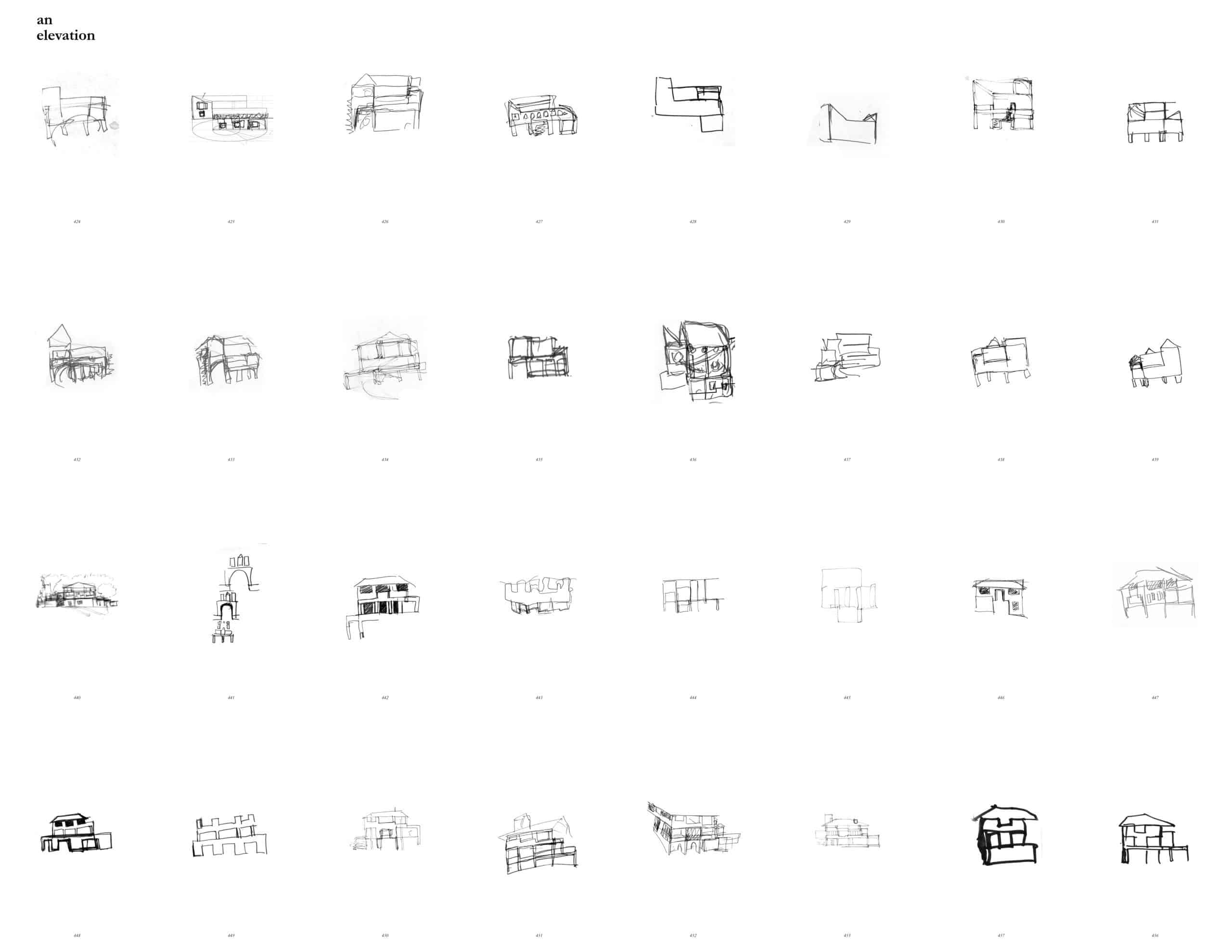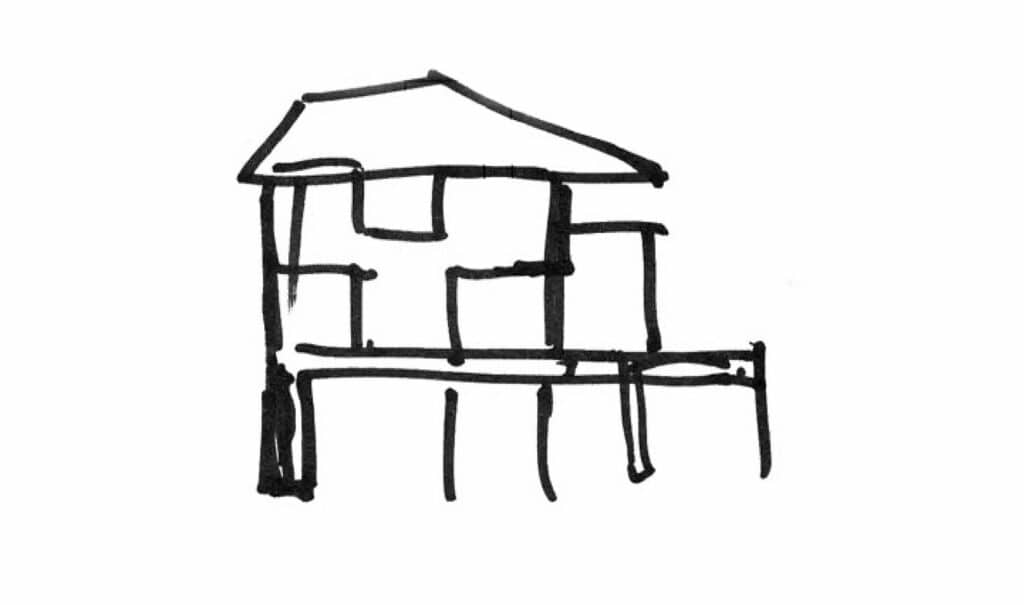The House and the Sketch

288 sketches precede the design of a house. Each one starts again from zero. None for more than a few seconds. Never larger than a few centimeters. With each repetition of the loop, the house searches for itself. For the first 287 pages, it did not know what it was looking for. The last page grants only a glimpse into the way to go. Robin Evans was right; the architect is ‘never working directly with the object of their thought.’
A house begins from a blank page. Within this space, it sees nothing but possibilities. Each one is a house it had already known: long houses, stepped houses, curved houses, simple houses, complex houses. They existed all along, waiting to be made real. It selects one from the many. It will be a courtyard house. The answer becomes a new question. What kind of courtyard house? A courtyard house with a nice roof. What kind of nice roof? A roof forming an entry. What kind of entry? The house discovers another question with each turn of the page. Whereas scaled orthography values completion, the sketch knows only repetition. No single drawing or combination of them contains what the house is looking for. It pursues a sketch that cannot yet be seen. With each hour, the image takes shape; not in the space of the page but in the duration of time.
1,000 monkeys at 1,000 typewriters are said to eventually, almost definitely, produce literature rivalling Shakespeare. Although it is the least probable outcome, with enough time, it is as possible as the most likely outcome. In 2003, an experiment put the theory to the test. Within five pages the monkeys had soiled their typewriters. Although lacking the elegance of a sixteenth-century sonnet, the monkeys had, in practice, produced something more valuable than they had in theory: a new outcome.

The house finds that although not every sketch differs from the last, they always change. Iterating gradually distances the house from its point of origin. Without knowing which direction to go, however, the sketches multiply without arriving anywhere. Some simply imitate out of habit what came before, going nowhere. Others form a field of choices, without a hierarchy to choose from; they spread only horizontally. A few manage to improve upon the last but optimise without ever changing the rules. Each one steps up a rung of a ladder that never changes. The house now decides to travel diagonally.
Without a destination as a guide, the house circles around itself. Its sketches begin to contradict, support and deny one another without any logic to their changing morality. In this mix, solutions that were first thought certain are abandoned and others are retrieved from dissolution. First goes the treatment of ground, then, the idea of a roof. Finally, it abandons its facade. No one iteration knows itself without completing the next. The house looks back at what remains and sees only a consistent scale and view. It repeats until there is more.
What eventually remains in common are the differences. By attempting to follow the same path each time, a new line emerges. In painting, the searching line traces over itself. Unlike the house, it knows what figure to find, yet it cannot reproduce the form. The searching line repeats its loop hoping that each one will be it’s last. Every line is the same, however. Their path was always known. The degree to which a line resembles its path determines its achievement. One path gives rise to many lines, just like a problem with multiple solutions. The house, not yet knowing its problem, searches for a path instead of a line. The sketch follows, converging into fewer and less accurate markings on the page.

Of all forms of drawing the sketch is most constrained. Its mechanics prevent what the house wishes for from ever taking place. On its page, a reduced number of lines preclude any detail, texture or effect. Their shrunken scale emphasises wholes at the expense of parts. Meanwhile, a compromised resolution magnifies every error. Thus, by its own nature, the sketch will never be complete. The house fills in its gaps, while perception interprets its appearance and memory attributes an essence. Plato called the combination of the two phantasia (one of the first known definitions of the ‘imagination’).
While Plato feared the conflation of essence and appearance, the house relies on it. It squints at each sketch, unable to grasp their shape. Succumbing to the limitations of pen and page, the house finds its freedom elsewhere. Geometry, program and material are all abandoned, none missed. Only an outline traces their periphery. Without content, everything renders equally. The choice to substitute or manipulate is made freely. Part and whole no longer compete. A series of figures – approximately the same dimension, but different in scale – treat beams the same as footprints, and bathrooms the same as sites. The idea of the house itself surrenders to the sketch’s impossibility.
Somehow the house continues on, believing it will recognise what it needs once it can be seen. Returning each time to a blank slate, the house forces its imagination onto the page. Repeating this act is not a process, but a method. From the Latin verb, processus ‘a going forward’, process is the searching line that already knows itself; the monkeys who would write a play equaling Hamlet. They proceed toward something they see, with each step providing evidence of their progress. The sketch is a method. From the Greek, meta ‘in pursuit of’ and hodos ‘a way or manner,’ method grants the freedom to diverge. Locations that have not yet been mapped must somehow still be found. The house continuously forgets so it can reimagine. To determine an end as separate from its beginning, the middle is marked by erasure. In the final drawing, the house is still not solved, it has only overtaken the sketch.
Bijan Thornycroft is a designer at WRNS Studio in New York and an independent consultant.
This text was entered into the 2020 Drawing Matter Writing Prize. Click here to read the winning texts and more writing that was particularly enjoyed by the prize judges.
